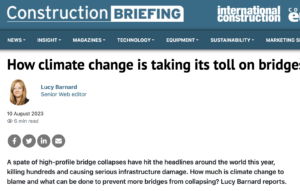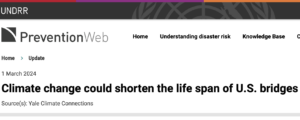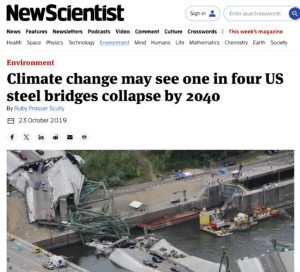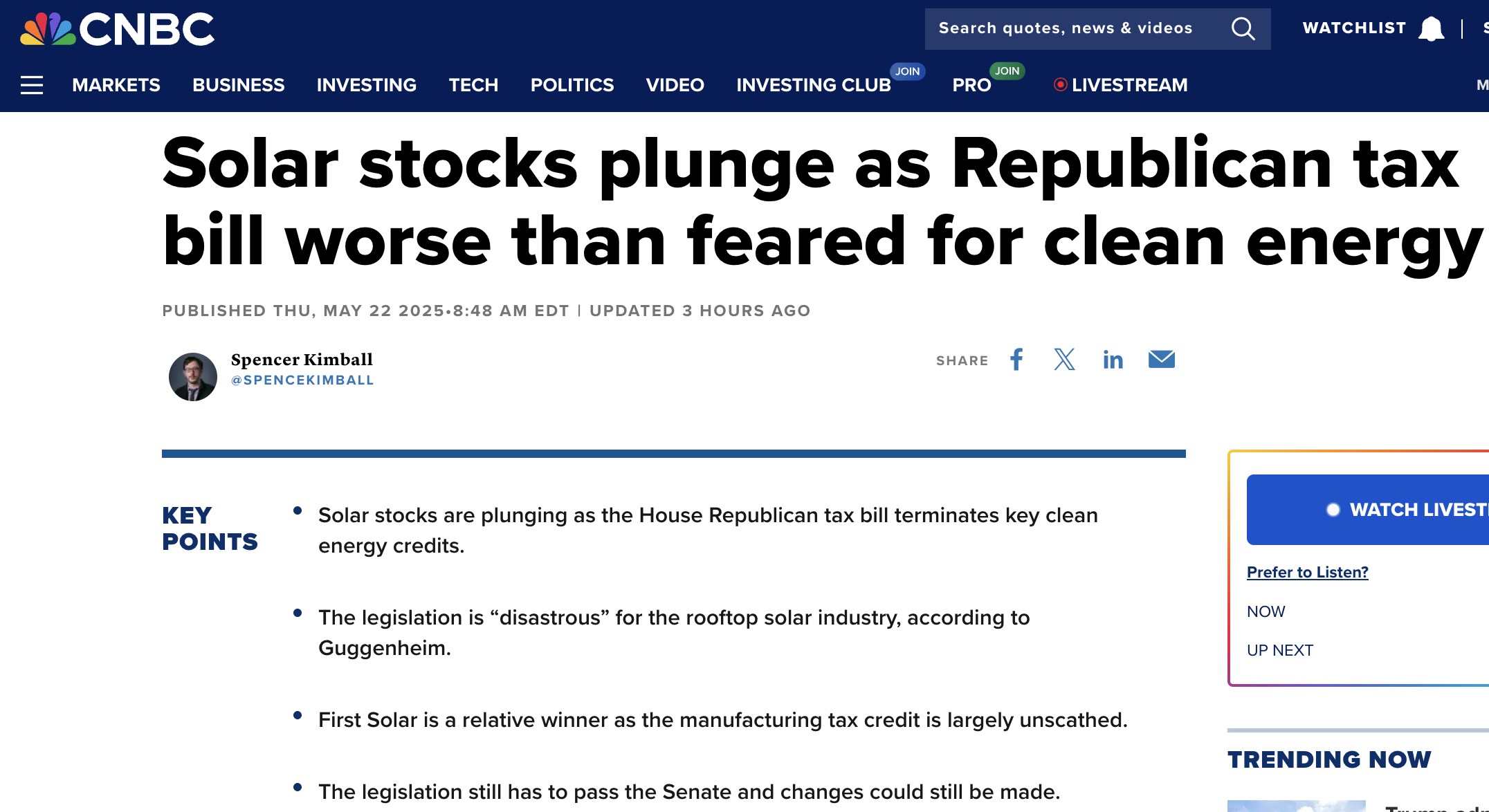Update: Meteorologist Anthony Watts: No, New York Times, Climate Change Isn’t Destroying Bridges
#
https://www.nytimes.com/2024/09/02/climate/climate-change-bridges.html
Related:
2007: ‘Global Warming’ claimed to have caused Minnesota bridge collapse – Joseph Romm – who served as Acting Assistant Secretary of the U.S. Department of Energy in 1997 and as Principal Deputy Assistant Secretary from 1995 though 1998 – stated in a piece amazingly entitled “Did Climate Change Contribute To The Minneapolis Bridge Collapse?”
Climate Depot’s Morano comment: Is it plausible that a bridge collapse was caused by “global warming?” We have been hearing this claim for decades. See: Flashback 2007: Warmist Joe Romm comically questioned whether the bridge collapse in Minnesota was a result of man-made global warming
Since federal research has sought a link between “climate change” and “fatal car crashes”, is it possible that anyone dying in a car crash could be listed as a “climate change” death? Say what?! U. S. Department of Transportation asks: ‘How might climate change increase the risk of fatal crashes in a community?’ &Feds Ask: Will Global Warming Cause More Deadly Car Crashes?
#
2023: How climate change is taking its toll on bridges – “As climate change increases the likelihood of extreme weather events, scientists predict that more bridges stand at risk of failure.”
#
March 1, 2024: Climate change could shorten the life span of U.S. bridges – Rising seas, heavy precipitation, and extreme heat are causing corrosion, buckling, and cracking. The U.S. has more than 600,000 bridges, and they’re not made to last forever.
Hussam Mahmoud is a professor in the Department of Civil and Environmental Engineering at Colorado State University…And he says climate change can accelerate that process. Rising seas and heavy precipitation can cause corrosion. Extreme heat can cause materials to expand beyond what they’re designed for — contributing to buckling or cracking. Increasing carbon pollution can even alter the pH of concrete, causing it to degrade faster.
#
2019: Climate change may see one in four US steel bridges collapse by 2040 – Global warming could contribute to the failure of one in four steel bridges in the US over the next two decades.
#
Flashback: Obama to make it tougher to build roads, bridges – all in thevname of ‘climate change’
Flashback: Claim: ‘Climate Change’ May 25% of U.S. Steel Bridges to Collapse by 2040
September 2024 and we are still doing the RCP8.5 thing
Climate Change Can Cause Bridges to ‘Fall Apart Like Tinkertoys,’ Experts Say https://t.co/tzGegqu2AU
— The Honest Broker (@RogerPielkeJr) September 2, 2024
Americas’s aging and overstressed infrastructure has been falling apart for decades. But NYTimes @CoralMDavenport blames this on emissions.
What Coral doesn’t mention is that instead of repairing our crumbling roads, bridges, storm/wastewater systems etc., we are wasting… pic.twitter.com/IxXvTUBxrF
— Steve Milloy (@JunkScience) September 3, 2024






